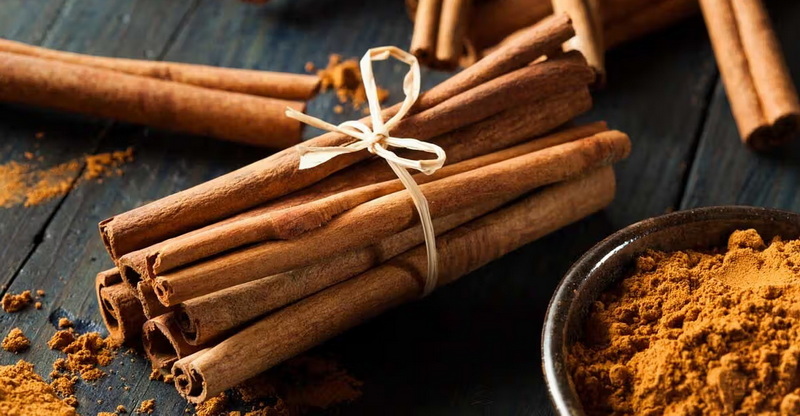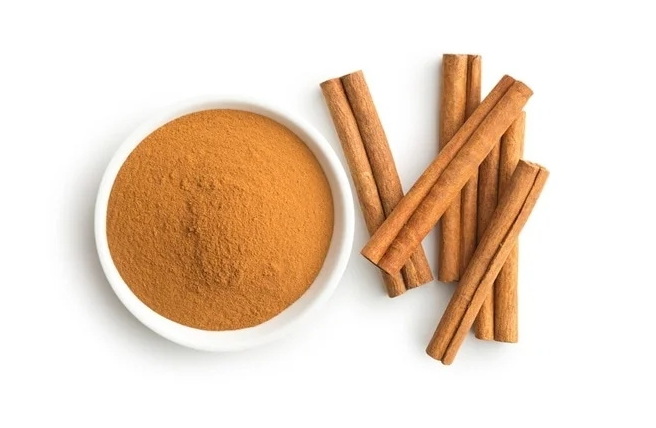Content Menu
● Introduction to Cinnamon Bark Extract
>> Types of Cinnamon
● Key Factors for Quality Cinnamon Bark Extract Producers
>> 1. Raw Material Selection
>> 2. Extraction Methods
>> 3. Purification Techniques
>> 4. Quality Control
>> 5. Regulatory Compliance
● Applications of Cinnamon Bark Extract
● Market Trends and Future Prospects
>> Sustainability Practices
>> Innovative Extraction Techniques
● Conclusion
● FAQs
>> 1. What is the difference between Ceylon and Cassia cinnamon?
>> 2. How is cinnamon bark extract typically extracted?
>> 3. What are the health benefits of cinnamon bark extract?
>> 4. How do I choose a reliable cinnamon bark extract producer?
>> 5. What are the common applications of cinnamon bark extract?
● Citations:
Cinnamon bark extract is a highly valued ingredient in both the culinary and pharmaceutical industries due to its rich content of bioactive compounds like cinnamaldehyde, which offers numerous health benefits. The quality of cinnamon bark extract depends significantly on the production process, starting from the selection of raw materials to the final extraction and purification methods. In this article, we will delve into the key factors that distinguish a quality cinnamon bark extract producer.

Introduction to Cinnamon Bark Extract
Cinnamon bark extract is derived from the bark of cinnamon trees, primarily from species like Cinnamomum zeylanicum (Ceylon cinnamon) and Cinnamomum cassia (Cassia cinnamon). The extract is known for its strong aroma and flavor, as well as its medicinal properties, including anti-inflammatory and antioxidant effects.
Types of Cinnamon
- Ceylon Cinnamon (Cinnamomum zeylanicum): Known for its lighter color and sweeter flavor, Ceylon cinnamon is considered to be of higher quality and is more expensive than Cassia cinnamon. It is native to Sri Lanka and is often used in traditional medicine and culinary applications.
- Cassia Cinnamon (Cinnamomum cassia): This type is darker and has a stronger, more bitter flavor. It is commonly used in commercial products due to its lower cost and is native to China.
Key Factors for Quality Cinnamon Bark Extract Producers
1. Raw Material Selection
A quality cinnamon bark extract producer must ensure that the raw materials are of high quality. This includes selecting cinnamon bark from mature trees, as the essential oil content is higher in older trees. The bark should be free from contaminants and have a strong, characteristic aroma. Producers should also consider the environmental impact of their sourcing practices, opting for sustainable methods that do not harm the ecosystem.
2. Extraction Methods
The extraction method plays a crucial role in the quality of the final product. Common methods include:
- Steam Distillation: This method is used to extract essential oils from cinnamon bark. It involves heating the bark with steam, causing the oils to vaporize and then condense for collection. Steam distillation is preferred for its ability to preserve the delicate compounds found in cinnamon.
- Solvent Extraction: This involves using solvents like ethanol to extract bioactive compounds from the bark. The solvent is then evaporated to obtain the extract. Solvent extraction is often used for producing extracts with a higher concentration of specific compounds.
3. Purification Techniques
After extraction, the crude extract needs to be purified to remove impurities and enhance the concentration of active compounds. Techniques like chromatography or resin purification are commonly used. These methods help ensure that the final product meets the required standards for purity and potency.
4. Quality Control
A quality producer must have robust quality control measures in place. This includes testing for purity, potency, and contaminants using methods like HPLC (High-Performance Liquid Chromatography). Regular audits and compliance with international standards like ISO or GMP are essential for maintaining quality consistency.
5. Regulatory Compliance
Producers must comply with local and international regulations regarding food safety and labeling. This includes ensuring that the product meets standards for heavy metals, microbial contaminants, and other safety parameters. Compliance with regulations helps protect consumers and maintains the reputation of the producer.

Applications of Cinnamon Bark Extract
Cinnamon bark extract is versatile and is used in various industries:
- Food and Beverages: As a flavor enhancer and preservative. It adds a warm, spicy flavor to baked goods, desserts, and beverages.
- Pharmaceuticals: For its medicinal properties, such as lowering blood sugar levels and improving heart health. Cinnamon extract is often used in supplements due to its antioxidant and anti-inflammatory effects.
- Cosmetics: In skincare products due to its antioxidant properties, which can help protect the skin from environmental stressors and promote healthier skin.
Market Trends and Future Prospects
The demand for cinnamon bark extract is increasing globally due to its health benefits and versatility in applications. Producers are focusing on sustainable practices and innovative extraction methods to meet this growing demand while ensuring environmental sustainability.
Sustainability Practices
Sustainable practices in cinnamon cultivation and harvesting are becoming more important. This includes reforestation efforts and fair trade practices that support local communities. By adopting sustainable methods, producers can ensure a steady supply of high-quality raw materials while contributing to environmental conservation.
Innovative Extraction Techniques
Advancements in extraction technology are allowing for more efficient and environmentally friendly methods. For example, supercritical CO2 extraction is gaining popularity due to its ability to extract compounds without the use of harsh solvents.
Conclusion
A quality cinnamon bark extract producer is distinguished by their attention to detail in raw material selection, extraction methods, purification techniques, quality control, and regulatory compliance. By focusing on these aspects, producers can ensure that their products meet the highest standards of quality and safety. As the demand for cinnamon bark extract continues to grow, producers must also prioritize sustainability and innovation to remain competitive in the market.

FAQs
1. What is the difference between Ceylon and Cassia cinnamon?
Ceylon cinnamon (Cinnamomum zeylanicum) is lighter in color and has a sweeter flavor, while Cassia cinnamon (Cinnamomum cassia) is darker and stronger. Ceylon is considered superior due to its lower coumarin content.
2. How is cinnamon bark extract typically extracted?
Cinnamon bark extract is typically extracted using methods like steam distillation for essential oils or solvent extraction (e.g., using ethanol) for bioactive compounds.
3. What are the health benefits of cinnamon bark extract?
Cinnamon bark extract is known for its anti-inflammatory, antioxidant, and antimicrobial properties. It can help manage blood sugar levels and improve heart health.
4. How do I choose a reliable cinnamon bark extract producer?
Choose a producer that emphasizes quality control, uses high-quality raw materials, and complies with regulatory standards. Look for certifications like ISO or GMP.
5. What are the common applications of cinnamon bark extract?
Cinnamon bark extract is used in food and beverages as a flavor enhancer, in pharmaceuticals for its medicinal properties, and in cosmetics for its antioxidant benefits.
Citations:
[1] http://www.orientjchem.org/vol30no1/extraction-of-essential-oil-from-cinnamon-cinnamomum-zeylanicum/
[2] https://patents.google.com/patent/CN107496269A/en
[3] https://ht.botanicalcube.com/advantaged-plant-extracts/cinnamon-bark-extract/cinnamon-bark-extract-powder.html
[4] https://jdn.ucas.ac.cn/public/uploads/files/621b288368bc8.pdf
[5] https://k-agriculture.com/cinnamon-quality-standards/
[6] https://www.youtube.com/watch?v=bDoaPIKT_Xg
[7] https://greenjeeva.ca/cinnamon-bark-extract-vs-cassia-vs-ceylon/
[8] https://blog.wordvice.cn/title-capitalization-rules-for-research-papers/






























